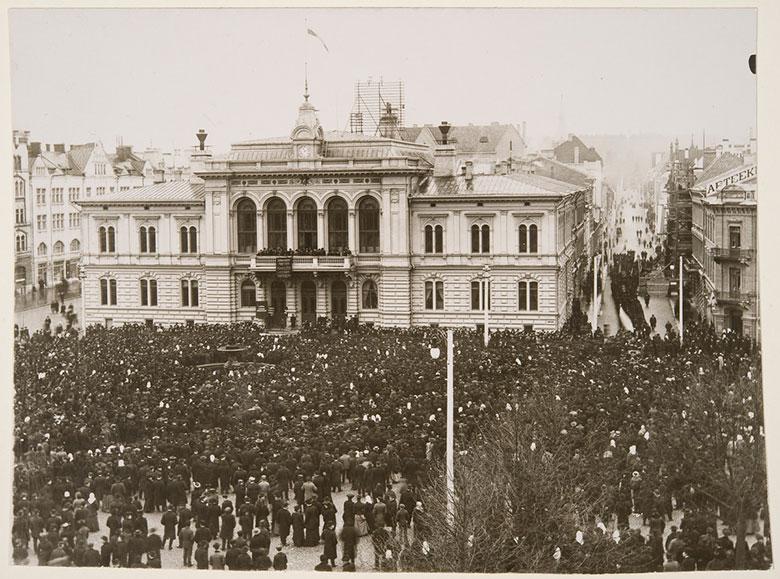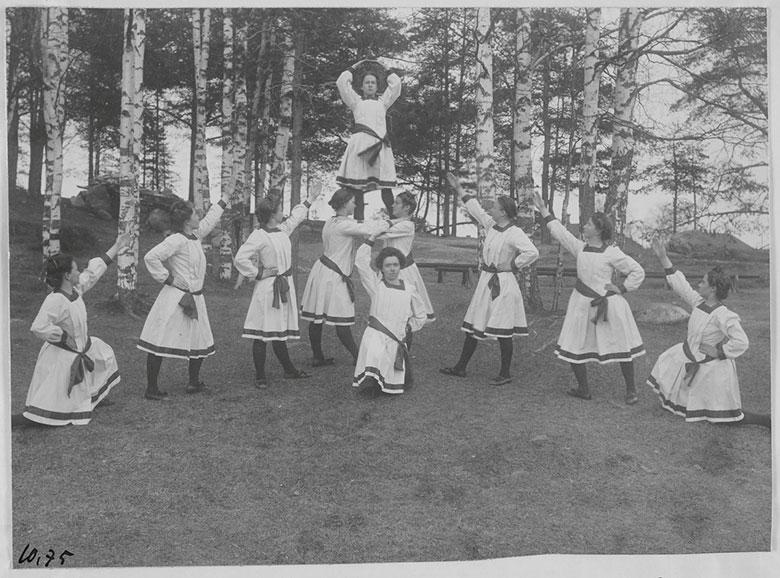Civil society in the years of storm (1900–1940)
In the beginning of the 20th century, the Finnish civil society was harmed by strong dividing forces.
In the beginning of the 20th century, Finland became independent and Europe entered a time of severe division. Workers rose to demand their rights, and right-wing radicalism gained strength giving birth to phenomena such as Nazism, and extremist Lapua Movement in Finland.
The Great Strike empowered the workers’ movement
The Great Strike of 1905 was a spiritual turning point which served to question all previous power structures in society. The workers’ movement radicalized after the strike. The number of workers’ organizations grew rapidly in 1905–1907. New party organizations, trade unions and local branches emerged.
The national co-operation organization of the workers’ trade organizations, the Finnish Federation of Trade Unions, was formed in 1907. The employers’ central organ, the Finnish General Federation of Employers, was also established in 1907.

A nation – and a civil society – torn apart
In Russia there was a revolution in 1917. The revolution caused turmoil in Finland, too, which led to a dramatic polarization of the nation. Relations between the population groups had started to become more tense from the year 1915 onwards.
The workers’ associations formed their own groups to maintain order, the red guards. Similarly, the right wing and the centrist people formed paramilitary contingents, the civil guards. The red guards and the civil guards fought a civil war in the spring of 1918, right after the Declaration of Independence on the 6th of December 1917.
It took until the end of the twentieth century for the gap to start closing up.
The civil war and the preceding events had a major influence on the different phases of Finnish civil society throughout the twentieth century. The nation polarized and the same happened to the civic, educational, and cultural and sports organizations, as well as the co-operative system. The workers who had left or had been expelled from sport clubs founded their own local, provincial and national sport organizations.
The same happened with other organizations. Workers withdrew from the cooperation movement and formed their own co-operative stores, abattoirs, etc. As the Finnish nation polarized due to events of 1905–1918, so did Finnish civil society. The gap was so big it took until the end of the twentieth century to start closing up.

Era of right-wing tendencies
Europe experienced a wave of right-wing radicalism at the turn of the 1930s and 1940s. It brought the Nazis to power in Germany and the fascists in Italy.
In Finland, too, there were strong right-wing tendencies that influenced the activities of the civil society. The agitation resulted in a large group of new associations, some of which were extremely rightist. The ethos of the period is visible in the zealous founding of military organizations.
Strong right-wing tendencies influenced the activities of the civil society.
At the same time, the workers’ associations and the trade unions faced difficulties. In 1930 the authorities prohibited the operations of the Finnish Federation of Trade Unions, several trade unions and other organizations led by left-wing socialists.
In 1933, the organizations were closed by an order of the Supreme Court. However, the same year the trade unions founded a new national union, the Central Organisation of the Finnish Trade Unions (SAK), but its membership remained low in the first half of the 1930s. At the turn of the 1930s and 1940s, altogether over 3000 leftist organizations were closed down.
Article is based on a text “Civil society in the years of storm” by Aaro Harju, published earlier on this web site.